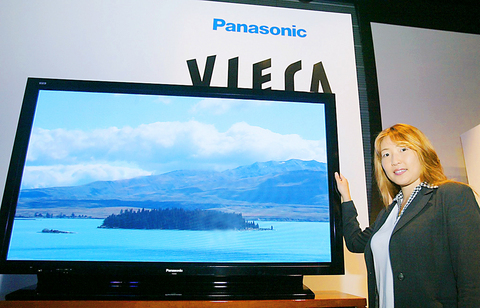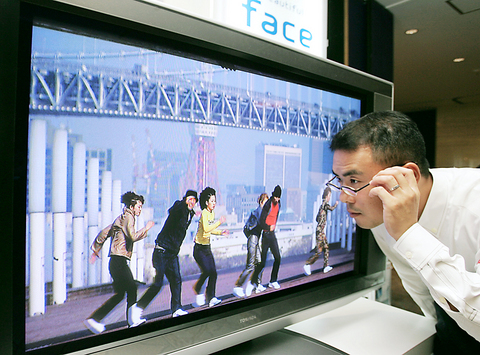The traditional CRT monitor, despite its many advantages, not least its relative cheapness, has now been overwhelmed by a host of flat-screen options that boast better definition, massive screen sizes and that do not take up too much room. If you have decided to ditch your power hungry, chunky CRT TV and replace it with something slim and sleek, you have three main options: LCD, plasma and DLP rear-projection screens. Where do you start?
LCD screens are the most mature of the three technologies, and are already the mainstream for PCs. The more advanced TFT (thin film transistor) technology, otherwise known as active matrix, has already replaced the earlier passive matrix technology, greatly enhancing response speeds and image sharpness.

The CRT was a formidable technology, but it has some major shortcomings: it sucks up too much electricity, and is prone to focus on the wrong point and to color variations across the screen. Also, its clunky high-voltage electric circuits and strong magnetic fields create harmful electromagnetic radiation, not to mention that it's simply too big.

PHOTO: AGENCIES
The LCD solves all of these problems, and prices for small-format LCDs have fallen considerably. In larger formats, LCD screens can still be very expensive, and for anything over about a 42-inch screen, other technologies bear consideration.
Plasma Display Panels (PDP) are a major player in the market for large-format screens, with the majority of products measuring in at over 42 inches, with 50-inch, 60-inch and 71-inch screens predominating.

While LCD technology has become relatively familiar to most people, PDP technology, which works on the principle that passing a high voltage through a low-pressure gas generates light, is still relatively new. But actually, production is less costly and less demanding in precision than for LCD.
Moreover, since they are emissive and use phosphor -- in the same way as CRT monitors -- they have an excellent viewing angle and color performance. Currently, the only problem is their limited life span, which brings up the question of cost-per-hour. PDP screens are generally estimated to have a life span of around 600,000 hours.
DLP (digital light processing) is at the core of the latest range of rear projection screens currently on the market. This technology, developed by Texas Instruments, has significantly resolved the problems that plagued previous generations of rear projection screens, such as lack of brightness and contrast.
The DLP is thought to be superior to the LCD in so far as it will provide a high-quality picture during its expected life span while LCD screens will deteriorate over time.
Rear-projection screens are chunkier than both plasma and LCD screens, but they are available in formats of up to 120 inches, making them ideal for people wanting to re-create the cinema experience in their living room.
Whichever type of screen you decide on, it is worth checking if it has a high progressive scanning rate to reduce ghosting and preferably has a built in channel selector, PC compatibility and quality speakers. Then, whether you are simply channel surfing, watching a movie, checking out the latest Xbox or PS2 games, or simply using it as supersized computer desk top, you'll have everything you need.
Translated by Ian Bartholomew

May 26 to June 1 When the Qing Dynasty first took control over many parts of Taiwan in 1684, it roughly continued the Kingdom of Tungning’s administrative borders (see below), setting up one prefecture and three counties. The actual area of control covered today’s Chiayi, Tainan and Kaohsiung. The administrative center was in Taiwan Prefecture, in today’s Tainan. But as Han settlement expanded and due to rebellions and other international incidents, the administrative units became more complex. By the time Taiwan became a province of the Qing in 1887, there were three prefectures, eleven counties, three subprefectures and one directly-administered prefecture, with

It’s an enormous dome of colorful glass, something between the Sistine Chapel and a Marc Chagall fresco. And yet, it’s just a subway station. Formosa Boulevard is the heart of Kaohsiung’s mass transit system. In metro terms, it’s modest: the only transfer station in a network with just two lines. But it’s a landmark nonetheless: a civic space that serves as much more than a point of transit. On a hot Sunday, the corridors and vast halls are filled with a market selling everything from second-hand clothes to toys and house decorations. It’s just one of the many events the station hosts,

Among Thailand’s Chinese Nationalist Party (KMT) villages, a certain rivalry exists between Arunothai, the largest of these villages, and Mae Salong, which is currently the most prosperous. Historically, the rivalry stems from a split in KMT military factions in the early 1960s, which divided command and opium territories after Chiang Kai-shek (蔣介石) cut off open support in 1961 due to international pressure (see part two, “The KMT opium lords of the Golden Triangle,” on May 20). But today this rivalry manifests as a different kind of split, with Arunothai leading a pro-China faction and Mae Salong staunchly aligned to Taiwan.

Two moves show Taichung Mayor Lu Shiow-yen (盧秀燕) is gunning for Chinese Nationalist Party (KMT) party chair and the 2028 presidential election. Technically, these are not yet “officially” official, but by the rules of Taiwan politics, she is now on the dance floor. Earlier this month Lu confirmed in an interview in Japan’s Nikkei that she was considering running for KMT chair. This is not new news, but according to reports from her camp she previously was still considering the case for and against running. By choosing a respected, international news outlet, she declared it to the world. While the outside world